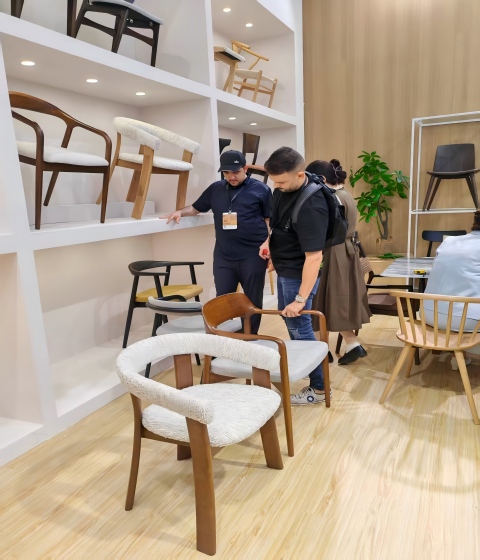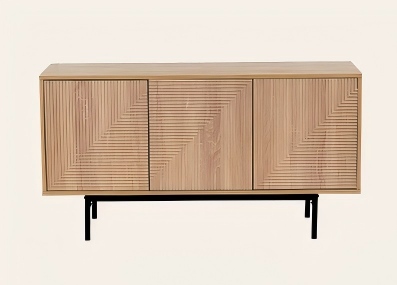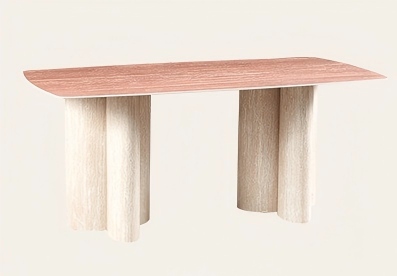How to Pick Chinese Furniture Suppliers? A European Importer’s Thoughts After the Shanghai Furniture Fair

I’m a seasoned European furniture importer with over ten years in the game. Trade shows, supplier talks, and market changes—I’ve seen it all. In this blog, I’ll share my real-world tips for choosing solid Chinese furniture suppliers, fresh from my time at the Shanghai Furniture Fair. If you’re an importer, wholesaler, or retailer aiming to source top-notch furniture from China, this guide will give you a clear, practical plan to vet partners. We’ll look past just price tags and dig into what makes a supplier a true fit for long-term success, helping you dodge risks in your supply chain.
Introduction: Back from the Fair with a Tough Choice
Picture this: I just got back from the Shanghai Furniture Fair, a major hub for spotting fresh Chinese furniture suppliers. The place was alive—booths packed with everything from slick dining sets to cozy upholstered pieces. I met tons of promising manufacturers, swapped business cards, and got a flood of detailed quotes in my inbox within days. It was exciting but a bit much. With all these choices, how do I figure out who’s the real deal for a steady, long-term partnership? Is the lowest price the only thing that matters?
From my experience, jumping at the cheapest offer often backfires—think late shipments, shoddy quality, or even legal headaches. So, I’ve built a straightforward risk assessment model to evaluate Chinese furniture suppliers. This isn’t just theory; it’s a hands-on checklist I’ve fine-tuned over years of importing to Europe, where tough rules and picky customers demand the best. By focusing on compliance, value, communication, production strength, and innovation, you can sidestep common traps and build solid supplier ties. Let’s break it down.
Core Screening Dimensions: Building a Supplier Collaboration Risk Assessment Model

To pick Chinese furniture suppliers wisely, I suggest using a clear risk assessment model. This isn’t about quick checks; it’s about diving deep into what makes a supplier reliable. Based on my post-fair takeaways, I’ll lay out five key areas with practical tips and examples for importers like you. This model helps you spot risks—like legal issues or sneaky costs—so your choices match market needs and keep profits strong.
Dimension 1: Compliance and Certifications (A Must-Have, No Exceptions)
Compliance isn’t just a nice-to-have; it’s the ticket to even start talking with Chinese furniture suppliers. Each market has its own rules, and skipping this step can mean costly bans or recalls. In 2025, with global regulations tightening, this is more crucial than ever.
Europe and EUDR: The EU Deforestation Regulation (EUDR), rolled out in late 2024 and fully enforced in 2025, is a big deal. It demands proof that wood products—like dining tables or chairs—don’t come from deforested areas. Suppliers need due diligence statements, timber source locations, and risk reports. At the fair, I zeroed in on those with Forest Stewardship Council (FSC) certification. It fits EUDR perfectly by ensuring sustainable forests. No FSC or EUDR compliance? They’re out—simple as that—to avoid legal trouble.
UK Market: If your goods are headed to the UK, focus on UKCA marking and flame-retardant rules under the Furniture and Furnishings (Fire) (Safety) (Amendment) Regulations 2025, effective October 2025. For upholstered items like armchairs or benches, suppliers must show their fillings and covers pass ignition tests, like cigarette or match simulations. I’ve dealt with Chinese suppliers clueless about these, and it led to rejected shipments. Always check if they can meet British standards for soft furniture.
Nordic and North America: In Nordic countries like Sweden or Denmark, FSC certification is a big deal because customers love eco-friendly stuff. North America often wants Business and Institutional Furniture Manufacturers Association (BIFMA) standards for commercial furniture, testing durability, safety, and ergonomics. BIFMA’s X5.1 tests for chairs, for example, make sure they hold up under real use.
Tip: Map out your target market’s rules first. Use certifications to quickly weed out Chinese furniture suppliers who don’t cut it. Ask for paperwork early to focus on those who take global standards seriously.
Dimension 2: The Real Deal Behind Price (Don’t Fall for Cheap Quotes)
Price quotes from Chinese furniture suppliers can look tempting. But the lowest number often hides bigger costs down the road. To get real value, you need to figure out what’s driving those price differences. This ensures your investment gives you durable, market-ready products without nasty surprises.
Materials: For a solid wood desk, one supplier might use top-grade oak with even thickness and quality finishes. Another might go for cheaper pine or thinner cuts, which can warp over time. At the fair, I compared quotes for similar dining chairs. The price gaps came from using rubberwood versus cheaper engineered options. Rubberwood lasts longer but costs more.
Craftsmanship: Traditional mortise-and-tenon joints hold up better than basic screw setups. They cost more but add years to a product’s life. In 2025, with trends leaning toward sustainable materials like reclaimed wood or bamboo, suppliers using these often charge more. But they deliver eco-appeal that clicks with European buyers.
Service Details: Does the quote cover solid packaging to avoid shipping damage? Are standard accessories, like hardware kits, included? Minimum Order Quantities (MOQs) should make sense—too low might mean the supplier’s shaky, too high can tie up your cash.
Hidden Costs: Low quotes can lead to fixing poor-quality items or dealing with customer returns. I’ve been burned by this before with cheap suppliers.
Advice: Ask for detailed quote breakdowns. Compare material specs, craftsmanship, and what’s included side-by-side. This shows you the true value, helping you pick Chinese furniture suppliers who focus on quality, not just low prices.
Dimension 3: Communication and Professionalism (The Key to Smooth Teamwork)
Good communication is a game-changer when working with Chinese furniture suppliers. The person you deal with reflects the company’s overall skill. It’s what keeps things running smoothly in international deals.
Response Speed: Do they reply within a day or two with clear, detailed answers? After the fair, quick follow-ups showed me who was serious.
Clarity: Vague replies hint at future mix-ups, especially with custom orders. Clear answers show they get your needs.
Problem-Solving: If I ask for changes, like tweaking upholstery for flame-retardant rules, top suppliers suggest options, like eco-fabrics that fit 2025 trends. Others just say “no can do,” which is a red flag.
Knowledge: They should know materials (like how sintered stone handles heat), production steps, global shipping, and certifications like EUDR or BIFMA. This makes navigating complex rules easier.
Tip: Test them early with specific questions, like how they track FSC wood sources. This shows their professionalism and service mindset, which are vital for long-term teamwork.
Dimension 4: Production Capacity and Quality Controls (The Backbone of Trust)
You can’t fully judge a supplier without checking their operations. Visiting their factory—whether in person or online—is a must to back up claims from events like the Shanghai Furniture Fair.
Equipment and Processes: Modern tools, like automated CNC routers, show efficiency and precision. Clear workflows cut down on mistakes.
Quality Control: They need an independent team with strict checks, like BIFMA-style durability tests for North American markets.
Track Record: Have they worked with clients like you in your market? Success with European or Nordic importers proves they can deliver.
This step builds confidence, ensuring your Chinese furniture suppliers can scale up and keep quality high.
Dimension 5: R&D and Flexibility (The Spark for Long-Term Growth)
Don’t just look for manufacturers—find partners who innovate. In 2025, with trends pushing customization and eco-friendly designs, suppliers offering OEM/ODM services stand out.
Adaptability: Can they tweak designs for market changes, like adding smart features or sustainable materials?
Trend Awareness: Their input on trends—like earthy colors or modular furniture—adds real value.
This flexibility turns Chinese furniture suppliers into true allies, helping your business grow.
Introducing Forest Furniture as a Reliable Chinese Supplier

Looking for a Chinese furniture supplier that checks these boxes? Check out Forest Furniture Home (forestfurniture-b2b.com). Based in China, they focus on solid wood and upholstered products, like dining tables, chairs, armchairs, and benches, serving markets like Europe, the UK, and North America. With over 20 employees, 50 workers, and a registered capital of over 10 million, they blend trade and manufacturing with a focus on quality and custom work.
Forest keeps up with 2025 trends, using sustainable materials like FSC-certified rubberwood and oak to meet EUDR and Nordic standards. Their top seller, the Omar Chair, comes in premium leather or boucle fabric and meets UK flame-retardant rules. They offer OEM/ODM services, support BIFMA for North America, and have shone at the Shanghai Furniture Fair, building strong partnerships. Their news covers trends like sintered stone and eco-upholstery, making them a great pick for importers who value quality and fresh ideas.
Conclusion
Choosing the right Chinese furniture suppliers takes a smart, all-angle approach. By focusing on compliance, real value, clear communication, strong production, and forward-thinking innovation, you’ll cut risks and set up for success. The goal is lasting wins—pick partners who lift your business.
FAQs
What certifications should I focus on for Chinese furniture suppliers in Europe?
For Europe, prioritize FSC certification and EUDR compliance. These ensure wood products are deforestation-free, as required by the EU Deforestation Regulation in 2025. They’re key for legal imports and appealing to green-minded buyers.
How do I dodge the low-price trap with Chinese furniture suppliers?
Ask for clear quote breakdowns from Chinese furniture suppliers. Compare materials, like rubberwood grades, and craftsmanship, like mortise-and-tenon joints. This spots hidden costs and ensures lasting value over cheap deals.
Why does communication matter with Chinese furniture suppliers?
Clear, fast communication with Chinese furniture suppliers prevents mix-ups, solves issues quickly, and shows they know trends like eco-fabrics in 2025. Test their skills early with targeted questions.
Why is checking factories important for Chinese furniture suppliers?
Visiting factories of Chinese furniture suppliers confirms modern equipment, solid quality checks, and proven success with clients in your market. It ensures they meet standards like BIFMA for North America.
How do Chinese furniture suppliers boost long-term innovation?
Top Chinese furniture suppliers offer OEM/ODM and suggest trend-based tweaks, like eco-friendly fabrics. This keeps them in sync with 2025’s push for customization and sustainability.

